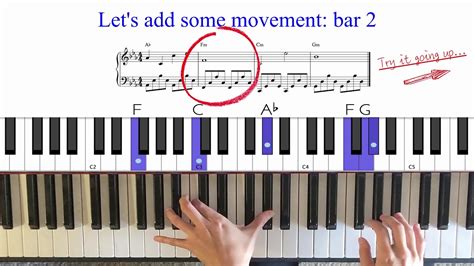How To Write A Melody Over Chords
Ronan Farrow
Mar 26, 2025 · 3 min read

Table of Contents
How to Write a Melody Over Chords: A Beginner's Guide
Writing a melody over chords is a fundamental skill in music composition. It's the process of creating a tune that complements and enhances a pre-existing chord progression. This guide will walk you through the process, offering practical tips and techniques for crafting compelling melodies.
Understanding the Basics: Chords and Melodies
Before diving in, let's clarify the relationship between chords and melodies. Chords provide the harmonic foundation – they create a sense of harmony and color. Melodies, on the other hand, are the tune, the singable part that often carries the emotional weight of the music. The goal is to create a melody that fits comfortably within the harmonic framework of the chords.
Key Concepts:
- Chord Tones: These are the notes that make up the chord itself (root, third, fifth, seventh, etc.). Using chord tones in your melody creates a strong sense of harmonic resolution and stability.
- Passing Tones: Notes that fall between chord tones, adding melodic interest and movement.
- Approach Tones: Notes that approach a chord tone from a half or whole step away, creating a sense of anticipation and resolution.
- Neighbor Tones: Notes that briefly step away from a chord tone and then return, adding ornamentation.
- Scale Degrees: Understanding the scale associated with your chord progression is crucial. Melodies are often built using notes from the scale.
Practical Steps to Writing a Melody
Here's a step-by-step guide to help you write a compelling melody over a chord progression:
1. Choose Your Chords
Start with a chord progression. Even a simple four-chord progression (like I-IV-V-I in C major) will work well. Experiment with different progressions to discover what sounds good to you.
2. Identify the Key and Scale
Determine the key of your chord progression. This will tell you which scale to use for your melody. For instance, a C major progression uses the C major scale.
3. Start with Chord Tones
Begin by placing chord tones on strong beats (usually the first beat of each measure). This provides a solid harmonic foundation for your melody.
4. Add Passing Tones and Neighbor Tones
Once you have the chord tones in place, add passing tones and neighbor tones to create a more interesting and flowing melody. These notes fill in the spaces between the chord tones, adding movement and character.
5. Experiment with Rhythm
Don't limit yourself to straight eighth or quarter notes. Experiment with different rhythmic patterns to add variety and interest to your melody. Syncopation can be particularly effective.
6. Consider the Melody's Arc
Think about the overall shape of your melody. Does it have a clear beginning, middle, and end? Does it build to a climax and then resolve? A well-structured melody will be more engaging and memorable.
7. Listen Critically
As you work, constantly listen back to your melody. Does it sound good over the chords? Does it flow smoothly? Are there any awkward leaps or dissonances? Be prepared to make adjustments and revisions as needed.
Advanced Techniques
Once you've mastered the basics, you can explore more advanced techniques, including:
- Motivic Development: Repeating and varying short musical ideas (motives) throughout your melody.
- Sequential Repetition: Repeating a melodic phrase at a different pitch level.
- Chromaticism: Using notes outside of the scale to add color and tension.
Conclusion
Writing a melody over chords is a creative process that takes practice and experimentation. By understanding the fundamentals and following these steps, you'll be well on your way to crafting beautiful and compelling melodies. Remember to listen critically, be patient with yourself, and most importantly, have fun!
Featured Posts
Also read the following articles
| Article Title | Date |
|---|---|
| How To Soften Water In An Apartment | Mar 26, 2025 |
| How To Start A Tattoo Removal Business | Mar 26, 2025 |
| Know How Systems Global | Mar 26, 2025 |
| How To Reset Check Engine Light On Bmw | Mar 26, 2025 |
| How To Use Rosary Bracelet | Mar 26, 2025 |
Latest Posts
Thank you for visiting our website which covers about How To Write A Melody Over Chords . We hope the information provided has been useful to you. Feel free to contact us if you have any questions or need further assistance. See you next time and don't miss to bookmark.
